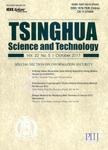Methods for Population-Based eQTL Analysis in Human Genetics
Methods for Population-Based eQTL Analysis in Human Genetics作者机构:Department of Bioinformatics and GenomicsCollege of Computing and Informatics University of North Carolina at Charlotte NC 28223 USA
出 版 物:《Tsinghua Science and Technology》 (清华大学学报(自然科学版(英文版))
年 卷 期:2014年第19卷第6期
页 面:624-634页
核心收录:
学科分类:0710[理学-生物学] 07[理学] 071007[理学-遗传学]
基 金:supported in part by a Faculty Research Grant from the University of North Carolina at Charlotte
主 题:expression Quantitative Trait Loci(e QTL) analysis confounding factors sparse learning models Lasso
摘 要:Gene expression is a critical process in biological system that is influenced and modulated by many factors including genetic variation. Expression Quantitative Trait Loci(e QTL) analysis provides a powerful way to understand how genetic variants affect gene expression. For genome wide e QTL analysis, the number of genetic variants and that of genes are large and thus the search space is tremendous. Therefore, e QTL analysis brings about computational and statistical challenges. In this paper, we provide a comprehensive review of recent advances in methods for e QTL analysis in population-based studies. We first present traditional pairwise association methods, which are widely used in human genetics. To account for expression heterogeneity, we investigate the methods for correcting confounding factors. Next, we discuss newly developed statistical learning methods including Lasso-based models. In the conclusion, we provide an overview of future method development in analyzing e QTL associations. Although we focus on human genetics in this review, the methods are applicable to many other organisms.



